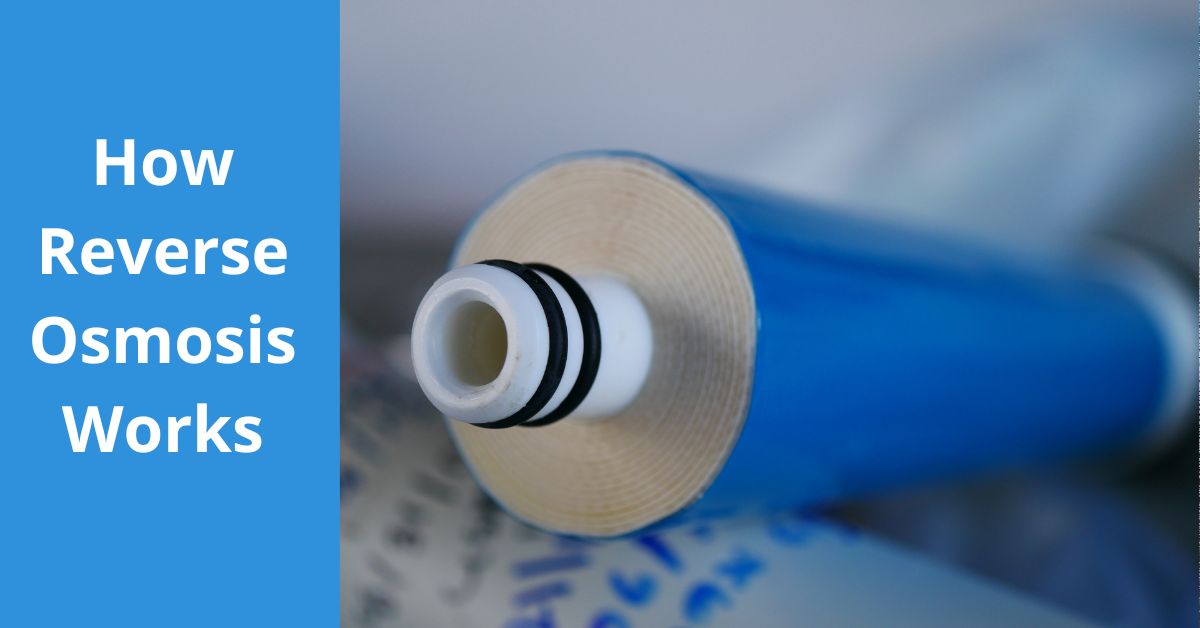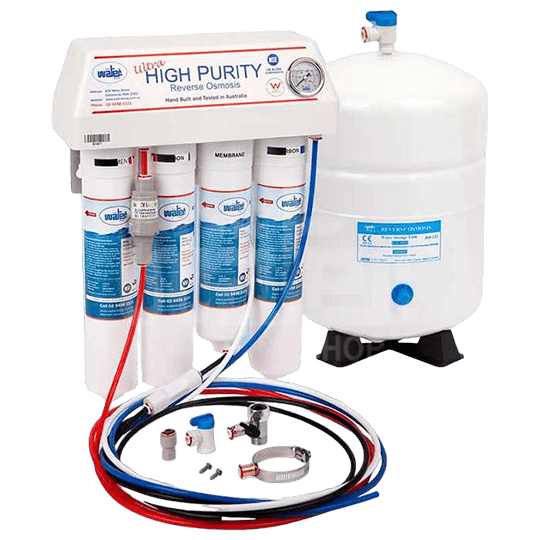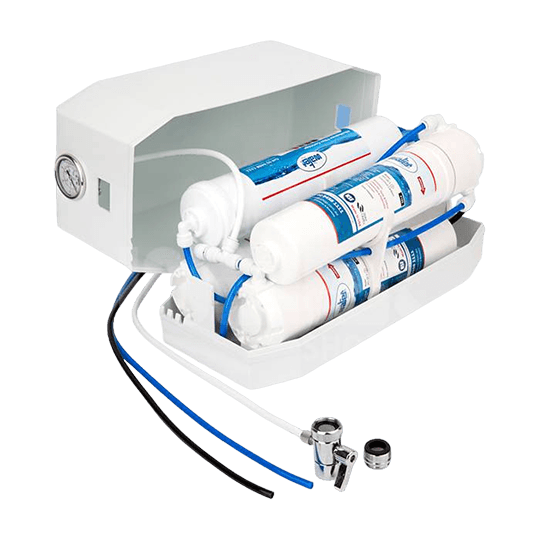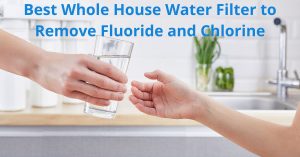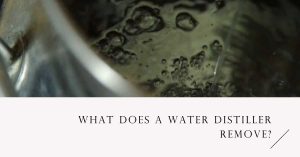As a water filtration specialist and a parent, I’ve spent years exploring various water filtration methods to ensure the safest, cleanest water for my family and community. One technology that consistently impresses me is reverse osmosis (RO). In this post, I’ll break down how reverse osmosis works and why it’s such an effective method for purifying water, especially when it comes to removing challenging contaminants like PFAS.
The Basics of Reverse Osmosis
To understand reverse osmosis, let’s first talk about it. Imagine you have two containers of water separated by a semipermeable membrane. One container has pure water, and the other has water with dissolved salts. Naturally, water will flow from the pure side to the saltier side to balance the concentration. This is osmosis.
Reverse osmosis, as you might expect, reverses this process. We apply pressure to push water from the more concentrated side (with contaminants) through the semipermeable membrane to the less concentrated side (pure water). The membrane acts like an extremely fine filter, allowing water molecules to pass through but blocking larger molecules like dissolved salts, bacteria, and other contaminants.
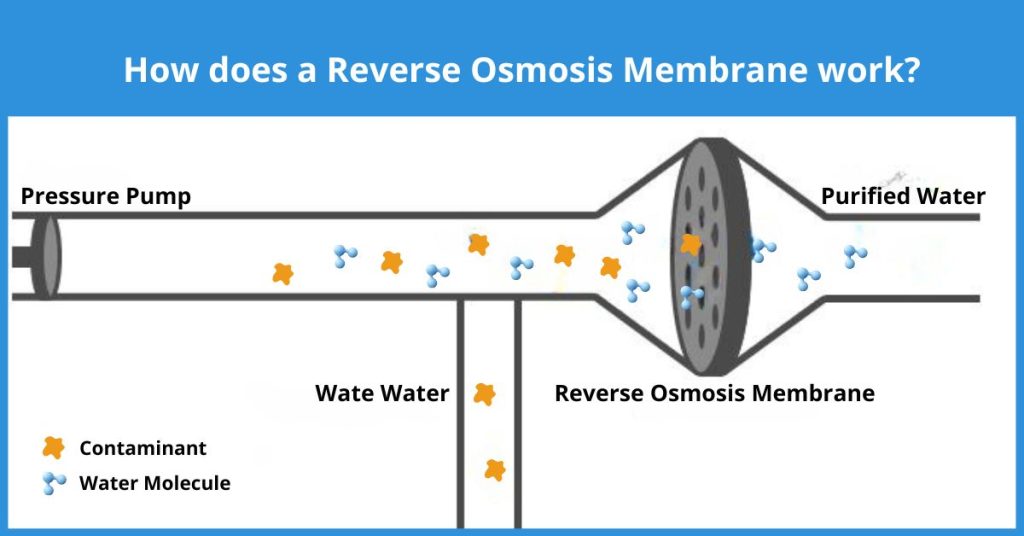
The Stages of a Reverse Osmosis System
A typical reverse osmosis system for home use doesn’t just rely on the RO membrane alone. It usually includes multiple stages of filtration to ensure the best possible water quality. Let’s look at the common stages you might find in a reverse osmosis filter 4 stage or reverse osmosis filter 5 stage system:
1. Sediment Filter: This first stage removes larger particles like dust, dirt, and rust. It protects the subsequent stages from clogging.
2. Activated Carbon Pre-Filter: This stage removes chlorine, which can damage the RO membrane, as well as organic compounds that affect taste and odour.
3. RO Membrane: This is where the magic happens. The semipermeable membrane removes up to 99% of dissolved contaminants.
4. Activated Carbon Post-Filter: This final carbon filter removes any remaining tastes or odours, ensuring the water is crisp and fresh.
5. Remineralization Filter (in some 5-stage systems): This optional stage restores the beneficial minerals removed during the RO process, enhancing taste and offering certain health benefits
Types of Reverse Osmosis Systems
There are several types of RO systems available for home use:
Undersink RO System: This is the most common type. Installed under your kitchen sink, it typically provides filtered water through a dedicated faucet.
Reverse Osmosis Water Filter Benchtop: These systems sit on your counter and don’t require any permanent installation. They’re ideal for renters or those who don’t want to modify their plumbing.
Whole House RO System: These larger systems filter all the water entering your home, ensuring clean water from every tap.
Whether you choose a reverse osmosis water filter benchtop 3 stage, a reverse osmosis water filter benchtop 4 stage, or an undersink system, you’re making a significant investment in your family’s health.
The Benefits of Reverse Osmosis
Now that we understand how RO works, let’s talk about why it’s such an effective water purification method. One of the most significant advantages of reverse osmosis is its comprehensive contaminant removal capabilities. RO can eliminate a wide range of contaminants, from dissolved salts and bacteria to viruses and even challenging pollutants like PFAS. This thorough filtration process not only ensures safer drinking water but also significantly improves its taste and odour. By removing chlorine and other compounds that can affect water quality, RO systems provide you with crisp, fresh-tasting water that’s a pleasure to drink.
While the initial investment in an RO system might be higher compared to some other filtration methods, it’s important to consider the long-term benefits. Over time, the cost per litre of purified water is quite low, making reverse osmosis a cost-effective solution for clean water. Additionally, these systems are remarkably low maintenance. Most RO units only require filter changes every 6-12 months, which means you can enjoy high-quality water without the hassle of frequent upkeep.
Another advantage of RO systems is their energy efficiency. Unlike some other water treatment methods, RO doesn’t require electricity to operate. The only exception is for systems with pumps designed for low water pressure situations. This energy-efficient operation not only keeps your utility bills low but also makes RO an environmentally friendly choice for water purification.
How to Reduce Exposure to PFAS
PFAS (per- and polyfluoroalkyl substances) have become a major concern in recent years due to their persistence in the environment and potential health risks. As a parent, I’m particularly concerned about these “forever chemicals.” The good news is that reverse osmosis is one of the most effective methods for removing PFAS from water.
Here are some steps you can take to reduce your family’s exposure to PFAS:
Install a Reverse Osmosis System: An RO filter for home use can significantly reduce PFAS levels in your drinking water. Whether you choose an undersink RO system or a benchtop water filter with reverse osmosis, you’re taking a big step towards safer water.
Test Your Water: If you’re concerned about PFAS, consider having your water tested. This can help you choose the most appropriate filtration system.
Avoid Non-Stick Cookware: Many non-stick pans contain PFAS. Consider switching to stainless steel, cast iron, or ceramic cookware.
Be Cautious with Fast Food Packaging: Many food wrappers contain PFAS. Try to minimise your use of these products.
Check Your Personal Care Products: Some cosmetics and personal care products contain PFAS. Check the ingredients lists.
Stay Informed: Keep up with the latest research and regulations regarding PFAS in your area.
Choosing the Right RO System for Your Home
When selecting a reverse osmosis system for your home, consider the following factors:
1. Water Usage: How much purified water does your family use daily? This will help you choose between a point-of-use system (like an undersink or benchtop model) or a whole-house system.
2. Available Space: Do you have space under your sink for an undersink RO system, or would a benchtop model be more suitable?
3. Water Pressure: To function effectively, RO systems must have adequate water pressure. If your home has low water pressure, you might need a system with a booster pump.
4. Maintenance Requirements: Consider the frequency of filter changes and the availability of replacement parts.
5. Certifications: Look for systems certified by reputable organisations, such as NSF International or the Water Quality Association.
Conclusion: The Power of Reverse Osmosis
As we’ve explored in this post, reverse osmosis is a powerful technology for ensuring clean, safe drinking water. Whether you opt for a reverse osmosis filter 4 stage, a reverse osmosis filter 5 stage, or a compact benchtop reverse osmosis system, you’re taking a significant step towards protecting your family’s health.
Remember, while RO systems are highly effective, they’re just one part of a comprehensive approach to water safety. Regular maintenance, staying informed about water quality issues, and being mindful of other sources of contaminants in our daily lives are all crucial. With the right knowledge and tools, we can all play a part in ensuring safer, cleaner water for ourselves and future generations.
Do you have questions about reverse osmosis or water quality? I’d love to hear from you! Let’s continue this important conversation about one of our most precious resources.

